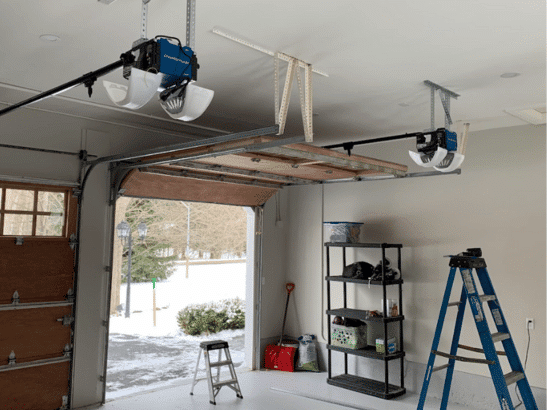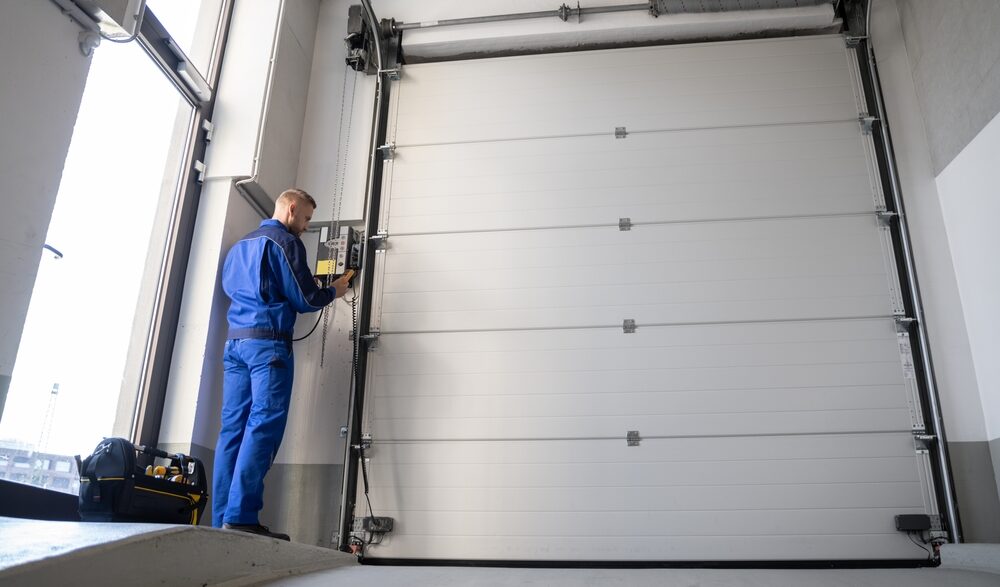How to reduce maintenance time with smart garage doors nanaimo material choices
How to reduce maintenance time with smart garage doors nanaimo material choices
Blog Article
Typical Problems and Solutions for Homeowners With Garage Doors
As a house owner, you may deal with a number of typical garage door concerns that can interrupt your everyday regimen. Let's explore the most frequent garage door issues and exactly how you can tackle them efficiently.
Malfunctioning Garage Door Openers
When your garage door opener begins acting up, it can be discouraging, particularly if you rely on it daily. You may find that it doesn't react to your remote or the door opens and shuts unpredictably. If that's not the problem, inspect the opener's power resource.
If you still experience issues, seek any kind of signs of endure the gears or motor. A defective opener may require lubrication and even a replacement component. Do not wait to consult your customer handbook for fixing suggestions details to your version, or take into consideration calling a professional if the trouble persists. Taking these actions can help restore your garage door's functionality in no time.
Misaligned Garage Door Tracks
If your garage door isn't opening or closing efficiently, misaligned tracks could be the perpetrator. Typical causes consist of damage or unexpected bumps that interfere with the placement. Dealing with these track issues can recover your door's feature and keep it running securely.
Root Causes Of Misalignment
Misalignment of garage door tracks can take place for several factors, frequently leading to aggravating functional issues. One common cause is regular damage; over time, screws and screws can loosen up, triggering the tracks to shift. If your garage door gets bumped or struck, that impact can misalign the tracks as well. In addition, adjustments in temperature level and humidity can cause the steel tracks to expand or agreement, causing misalignment. Dirt and debris buildup can also obstruct the tracks, pressing them misplaced. Improper installation can lead to persistent placement troubles. Identifying these causes can help you understand why your garage door isn't functioning efficiently.
Fixing Track Problems
Dealing with track concerns with misaligned garage doors needs a mindful strategy to assure smooth procedure. Evaluate the tracks for bends or particles that may obstruct movement. Utilize a level to check if the tracks are straight; otherwise, carefully touch them back right into placement with a rubber club. Next, validate the brackets holding the tracks are tight; loosened screws can cause imbalance. If the tracks are greatly damaged, take into consideration changing them. As soon as lined up, lube the tracks with a silicone-based spray to decrease friction. Finally, test the garage door's procedure to validate it opens and shuts smoothly. Routine upkeep will certainly assist prevent future track issues and maintain your garage door operating appropriately.
Broken Springs
When your garage door instantly refuses to open or shut, it's frequently as a result of damaged springs. These springtimes bear the weight of the door, making it simple for you to raise or lower it. If they break, you'll see that your door feels hefty or won't budge at all.
To validate the problem, visually examine the springs for voids or breaks. If you presume they're damaged, don't attempt to fix them on your own, as they're under high tension and can create injury. Rather, call a professional that can safely change the springs.
Normal maintenance can aid avoid spring failure, so watch on their condition and lubricate them periodically. If you're experiencing frequent springtime troubles, consider updating to higher-quality springtimes that can withstand more wear and tear. This positive strategy can conserve you time and cash in the future, ensuring your garage door runs efficiently.
Noisy Garage Doors
After attending to issues like busted springs, you might discover one more typical trouble: loud garage doors. If your garage door squeaks, rattles, or groans, it can be rather bothersome, specifically if it's disrupting your tranquility. The noise frequently originates from worn-out rollers, loosened equipment, or lack of lubrication.
Start by examining the rollers and hinges. If they're unclean or harmed, cleaning up or replacing them can greatly decrease noise. Next off, look for loose screws or screws; tightening them can eliminate rattling audios. Do not neglect to oil the relocating get rid of a silicone-based spray or garage door lubricating substance. This will certainly help lessen rubbing and noise.
If your door still seems like a dinosaur, take into consideration consulting a professional. Normal maintenance can protect against noisy garage doors and extend their life-span, ensuring you take pleasure in a quieter, smoother operation.
Garage Door Remote Issues
Many home owners experience irritation with garage door remote concerns eventually. If your remote isn't working, the very first step is to examine the batteries. Weak or dead batteries are commonly the wrongdoers. Replace them and see if that fixes the problem. If the remote still will not operate, attempt reprogramming it. Consult your garage door opener handbook for details directions.
In some cases, interference from other electronics can impact your remote. Examine for any type of nearby devices that could be creating a signal disturbance. If that does not aid, check the remote for physical damages, like fractures or broken switches.
One more common issue is distance; you may just be as well much from the garage door. They can detect and take care of any type of hidden troubles with your garage door system.
Climate Stripping Problems
If you see drafts, water leaks, or boosted power bills, your garage door's weather stripping could be worn out. Recognizing just how to spot indications of wear and recognizing installment suggestions can aid you maintain a correct seal - garage doors nanaimo. When it's time for a substitute, you'll have lots of alternatives to select from
Indicators of Put On
As you use your garage door gradually, the climate stripping can start to show signs of wear, which official source is important to resolve. Seek spaces or fractures in the rubber or plastic product; these can allow drafts, dirt, and moisture. If you observe the stripping is brittle or tearing away from the door, it's time to act. You could additionally discover that your garage door doesn't secure properly, causing increased power costs or bug problems. On a regular basis check the weather stripping to capture these problems early. If you see significant damage, replacing the weather condition removing can assist keep your garage's effectiveness and shield your items from the components. Do not disregard these indicators-- act immediately!
Installation Tips
When you discover wear on your garage door's climate stripping, resolving the installment can make a considerable distinction. First, validate you have the appropriate kind of weather condition removing for your garage door. Step the door accurately to cut the removing to the appropriate size. Clean the surface area where you'll use the weather stripping, removing any kind of dirt or particles to ensure a solid bond. Use a top quality adhesive or comply with the supplier's directions view it now for installation. Ensure it's lined up properly to seal spaces successfully. Regularly check the installment for any indicators of damages or detachment. By paying focus to these information, you'll improve your garage door's insulation and secure your home from the aspects.
Replacement Options
While you might have installed your garage door's weather condition stripping appropriately, wear and tear can still lead to troubles that require replacement. Step your door's dimensions precisely to guarantee a proper fit, and pick self-adhesive strips for easy setup. Frequently checking and replacing weather condition stripping not just enhances your garage's power efficiency however also safeguards it from damage.
Sensor Malfunctions

Beginning by checking the sensor placement. Make sure both sensors deal with each other and are level. If they're not, adjust them up until they are. Next, tidy the sensor lenses with a soft towel to get rid of any dust or particles that can obstruct their sight.
If the sensors show up undamaged but the door still won't close, it may be time to change them. With a little troubleshooting, you can typically deal with sensor click for more info issues and obtain your garage door functioning smoothly again.
Frequently Asked Inquiries
How Commonly Should I Preserve My Garage Door System?
You must keep your garage door system at the very least twice a year. Routine look for wear, lubrication of moving parts, and adjusting the tracks can keep it operating smoothly and extend its life-span substantially.
Can I Mount a Garage Door Myself?
Yes, you can set up a garage door on your own, however it requires cautious planning and the right tools. See to it you adhere to the manufacturer's directions very closely and take into consideration safety and security precautions to prevent crashes during installation.
What Is the Typical Life Expectancy of a Garage Door?
The average lifespan of a garage door is commonly 15 to three decades, depending upon materials and maintenance. If you look after it well, you can optimize its durability and delight in trusted efficiency.

Just how Do I Select the Right Garage Door?
When you select the appropriate garage door, think about materials, design, and insulation. Think of your home's style, spending plan, and upkeep needs. Don't fail to remember to examine regional regulations and energy efficiency ratings for excellent performance.
Are There Energy-Efficient Garage Door Options Available?
Yes, there are energy-efficient garage door choices offered. You can pick protected doors, which assist preserve your garage's temperature level, or seek models with a high R-value to boost energy performance and decrease power costs.
Report this page